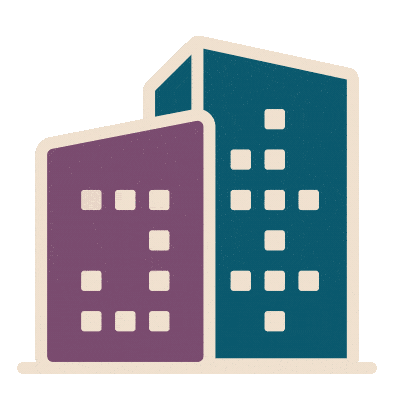Introducing the World Green Building Council’s new digital case study library
The World Green Building Council (WorldGBC) recently launched a new digital case study library that highlights ‘best in class’ buildings noted for excelling in key areas of environmental sustainability and enhancement of human health.
People spend the vast majority of their life (averaging 90%) inside buildings.1 Research suggests that this factor – the physical / social environment - is the largest determinant of peoples’ health.2 Or in other words, the places where we spend most of our time (and how they are designed and maintained) matter to our health, happiness and performance. A lot.
But the ways buildings impact their occupants’ health and well-being is vast and complex. Studies have suggested that everything from room temperature to natural design elements (like plants or natural wood floors) to lighting type can have an impact on the way people feel and function. This has left designers, building owners, and tenants the extremely difficult job of translating this knowledge into actual design solutions. One of the best ways to learning how to do this is to see how others have successfully accomplished it for themselves.
The World Green Building Council is helping building professionals learn from each other
To answer this need, the World Green Building Council (WorldGBC) recently launched a new digital case study library that highlights ‘best in class’ buildings noted for excelling in key areas of environmental sustainability and enhancement of human health.
These healthy case studies are existing buildings or spaces that can demonstrate they excel in the provision of features that enhance human health, as verified by achieving a specific health-based certification (e.g., The WELL Building Standard), or demonstrate equivalent levels of performance using verified data.
For example, CBRE’s Vancouver office is included on the map for achieving Gold certification under the WELL Building Standard and for its multiple features that promote a healthy work environment.

The library also features industry “game changer” projects – those that have achieved the criteria for both healthy and net zero performance criteria – and information from the case studies about their specific features, lessons learned and additional project information. The case study library is therefore a useful resource for sharing and learning about best practice approaches to achieving pioneering levels of sustainable performance.
Your Organization Can Participate
The case study library is currently open for new submissions via the website on a rolling basis. Submissions are reviewed against qualification criteria, developed by WorldGBC with input of an advisory committee of development partners. This process is to ensure that each project featured in the library represents an outstanding example of sustainability in the built environment, as a net zero carbon building or across different areas of health and wellbeing.
Over time, the case study library will be developed to respond to the changing nature of sustainability and the impact of the WorldGBC global network of almost 70 Green Building councils, closely linked to the UN’s Global Goals.
By keeping track of these projects, WorldGBC will be able to share insights about global trends in providing solutions to reducing the environmental impact of buildings, to help inform policymakers, designers, and developers about the feasibility, best practices, while promoting advanced sustainable building performance.
Bibliography
- Pryce-Jones J. Happiness at Work : Maximizing Your Psychological Capital for Success. Wiley-Blackwell; 2010.
- Health Affairs. Health Policy Brief: The Relative Contribution of Multiple Determinants to Health Outcomes. 2014. doi:10.1377/hpb2014.17
- Global Wellness Institute. Build Well to Live Well : Wellness Lifestyle Real Estate and Communities.; 2018. https://www.globalwellnessinstitute.org/wellness-real-estate-communities-research.







